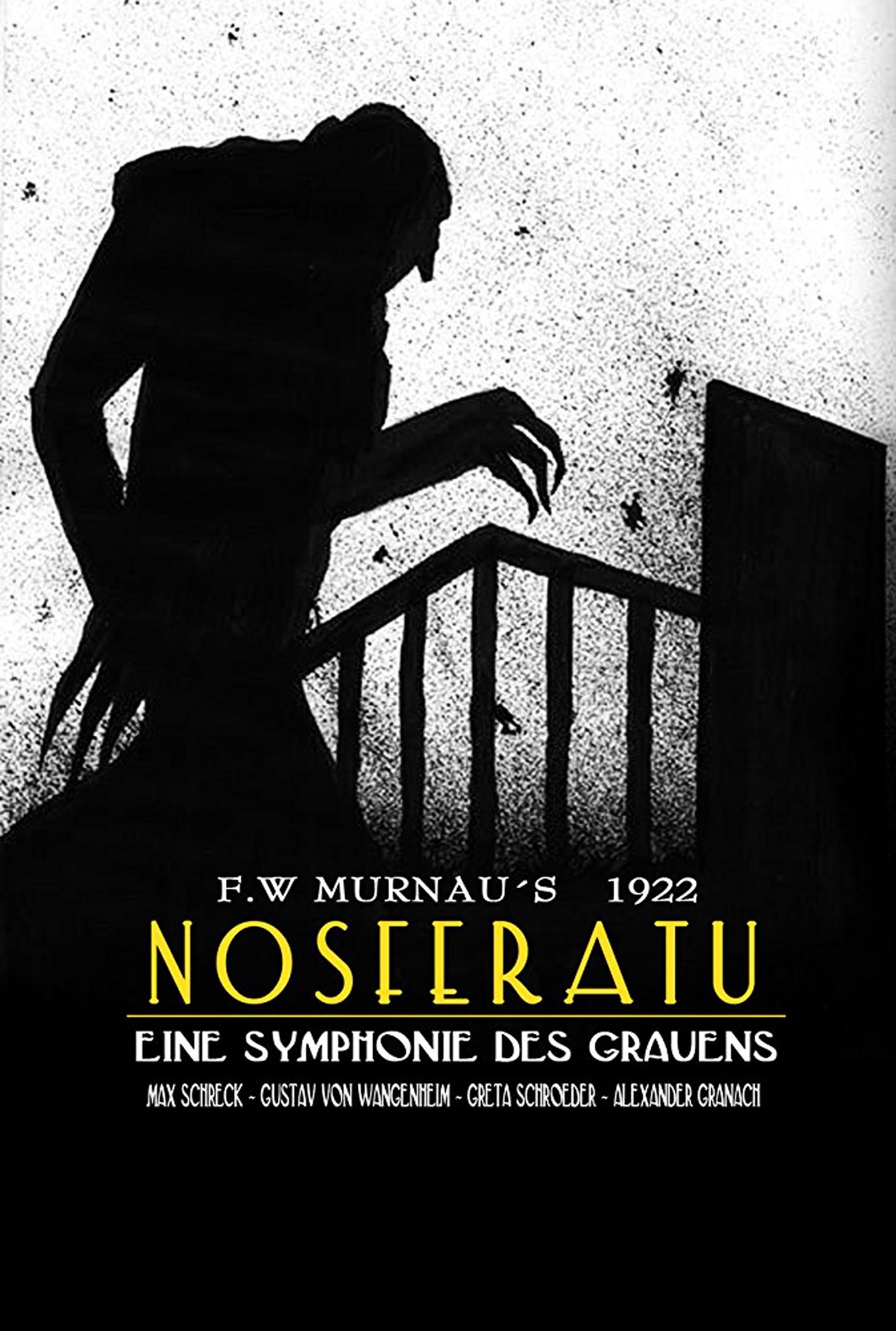Summary:
An unauthorized adaptation of Bram Stoker’s Dracula, featuring the vampire Count Orlok.
My Thoughts:
“Nosferatu” is one of the silent film era greats, and, in my opinion, it is the greatest vampire movie of cinema’s adolescences. While Dreyer’s “Vampyr” is creepy and atmospheric, and it plays wonderfully with light and shadow, it doesn’t hold a candle to the terrifying performance of Max Schreck as Count Orlok. Bela Lugosi’s performance in “Dracula”, which, I might add, is far less faithful to its namesake’s source material than this film, is practically laughable when compared to Schreck. I have yet to see Louis Feuillade’s seven hour serial silent film “Les Vampires (1915)”, as seven hours of silent film might be even a bit too much for me (though the fact that Lois Bunuel loved that film does intrigue me quite a bit- maybe some day down the line, dear reader, I’ll tackle that beast). But beyond Schreck himself, I have to marvel at this movie’s silent era technical wizardry. It’s filled with beautifully haunting imagery, some of which I have no idea how they were able to capture (like the Venus fly trap). It has inspired parodies (“What We Do in the Shadows”), remakes (“Nosferatu (1979)”), and even fictionalized retellings about the production of Nosteratu (“The Shadow of the Vampire”). F.W. Marnau masterfully creates a world the evokes dread without a sound, and even though the film is ninety-seven years old, for cinephiles like myself, it is still just as captivating as it was the day it was released.
“Not so hasty, young friend! No one can escape his destiny.”
After the mysterious Count Orlok (Max Schreck, “Der Richter von Zalamea”) expresses interest in buying a new home, an estate agent named Hutter (Gustav von Wangenheim, “Woman in the Moon”) travels to the Count’s remote estate to complete the paperwork, at the behest of his boss, Knock (Alexander Granach, “Hangmen also Die”). Meanwhile the previous While Hutter is there, Orlok becomes obsessed with Hutter’s wife Ellen (Greta Schroder, “Victoria the Great (1937)”).
I mentioned above that this is an unauthorized adaptation of Bram Stoker’s Dracula (and coincidentally, this film is far better than Francis Ford Coppola’s “Bram Stoker’s Dracula”). For those familiar with Dracula, let me just make the character connections really quick. Orlok is Dracula, Hutter is John Harker, Knock is sort of a blend of Harker’s boss and Renfield (the guy who goes crazy and eats spiders in the asylum), and Ellen is Mina Harker. If you know the story, you can pretty much tell the direction of the plot, and as Dracula is one of the most retold stories in cinematic history, I really feel no need to run over the plot again; instead, we’ll focus on what makes Nosferatu special.
The number one thing about this film, the thing that makes it memorable after nigh 100 years, is Max Schreck. I know I mentioned this above, but it is his performance that sells this film. Schreck barely blinks onscreen (I read he blinks only once, and to my knowledge that is accurate); his wide-eyed, hungry gaze seems to pierce through to the viewers’ souls. The makeup for Schreck makes him seem rodent-like and inhuman; his jagged fangs protrude from his upper lip, his fingernails are overgrown and sharp. Even the way Schreck carries himself gives the hint of something unnatural- he moves like someone who hasn’t moved in a hundred years. His body is stiff, his motions ridged. Honestly, Schreck’s performance is probably my favorite performance of the whole silent film era, though Renee Jeanne Falconetti’s performance as the titular character of “The Passion of Joan of Arc”, is a close second. Everything that Schreck does just draws me into the screen, and that is elevated by some of the other actors.
I think Alexander Granach, who plays Knock (the Renfield character), also does a wonderful job of selling the craziness of this movie. His character is the one that goes insane and begins talking about how there is power in blood, and his unhinged performance also adds to the atmosphere of the movie. Gustav von Wangenheim overacts a bit, but I honestly can’t fault him too much for his acting style, as I know most of that was just the style of the time.
F.W. Murnau’s direction is brilliantly on point. He uses the film’s admittedly sparse production design to his advantage, filling up the empty spaces with darkness and shadow, allowing Schreck’s performance to be the focal point of every scene, while still developing the world around him. There are beautifully framed shots, wonderful use of silent era special effects, and a remarkably dark ending that will stay with the viewer for a while after the last title card has faded from screen.
Verdict:
I was incredibly excited to revisit “Nosferatu” as I had only seen it one time before this. A second viewing really solidified this film as not only a great film from the silent era, but a great film period. I predict this movie’s influence will stretch well beyond the century mark; this is a film that will ever be remembered and revered by cinephiles, as well it should. For those looking to try their hand at silent films for the first time, this is a pretty good place to start. It is a touch slow in the beginning, but the moment Orlok hits the screen, I was entranced until the end.
This is a marvelous film; one that I wont ever forget.
Review Written By:






